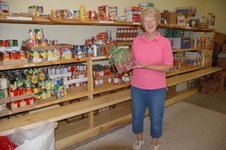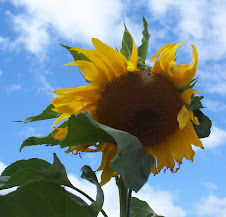During our garden clean up we encountered a few interesting items notable to students and adults alike. While we composted most of the inedible plant parts, not all made it in the bin. The tomato plants, for one, quickly found there way into the trash. Having been hit hard by blight due to a warm and very wet summer, we made sure the diseased plants did not go into the compost. It is important not to compost diseased plants as many disease causing fungi can survive through the winter.
We also found a stranger in the garden... Queen Anne's Lace, Daucus carota, also called wild carrot. Though it is edible just like the domesticated carrot, it becomes too woody for consumption as it matures. Weeds are not wanted in any garden but in this case it offered us a wonderful teaching tool. Over the summer students were encouraged to try many new herbs, vegetables, and fruits from the garden. Some students became incredibly adventurous eating almost anything they found. Enthusiasm and curiosity may be a wonderful thing but can lead to dangers. Our edible friend, Daucus carota, though not particularly tasting, is not dangerous. Poison hemlock, Conium maculatum, an invasive plant that has spread across the northern states, can be deadly. This is why it is important not eat any wild plants unless you are an expert in discerning their species. While this is worth while advice for any student, it is wise to heed by all.
Sunday, September 18, 2011
Notes from the Garden Harvest
Labels:
2011,
composting,
disease,
harvest,
poison hemlock,
tomato,
wild carrot
Subscribe to:
Post Comments (Atom)




No comments:
Post a Comment